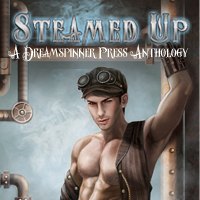Have you ever seen an interesting-looking book cover and turned the book over to read the bit on the back? Or have you ever been browsing online and scrolled down to the paragraph that tells you what the book’s about? Those short paragraphs are called “blurbs,” and they’re almost as important as the story itself. Readers check them out to decide if your book is the sort of story they’d be interested in reading.
If you’re self-publishing, you’ll definitely need to learn how to write an enticing blurb. But even if you’re hoping to be traditionally published, it’s a useful skill to have. When I made my most recent novel pitch, I was asked to provide a blurb that would introduce the main characters, the principal conflict, and a “hook” that would make my audience want to read more. If I couldn’t get the publisher (agent, editor, etc) interested in my story, how could I convince them that readers would be interested?
I want to emphasize that a blurb and a summary are not the same thing. If you’re asked to provide a summary, the publisher/agent/editor wants to know your entire story, including how the plot will be resolved at the end. Unanswered “hook” questions (“how will Ali save the kingdom now?”) are frustrating and unprofessional in a summary.
Blurbs, directed to your potential readers, are different. If the blurb explains how the story ends, it will be the opposite of enticing–why bother reading the book if the back spoils the surprise? The point of the blurb is to give the reader some basic information about the start of the story you’re telling, let them know what kind of story it is, and make them eager to find out what happens next. Blurbs and summaries serve different functions, even though both describe “what the story is about.”
 I learned to write blurbs thanks to the folks at Dreamspinner Press, who published my short story “Ace of Hearts” in their steampunk romance anthology, “Steamed Up.” Dreamspinner requests that authors provide blurbs for short stories as well as novels and novellas. Even though the blurbs aren’t used “on the back of the book,” they do provide the company with material they can use to market the story and the anthology.
I learned to write blurbs thanks to the folks at Dreamspinner Press, who published my short story “Ace of Hearts” in their steampunk romance anthology, “Steamed Up.” Dreamspinner requests that authors provide blurbs for short stories as well as novels and novellas. Even though the blurbs aren’t used “on the back of the book,” they do provide the company with material they can use to market the story and the anthology.
Blurbs need to be tightly focused. Dreamspinner suggests approximately five sentences: long enough to give an idea of the story’s flavour, short enough to skim. Blurbs aren’t a place for world building, minor characters, or other small details. Keep your focus on the most important factors:
Who is/are your main characters?
What is their primary goal? What major challenges do they face in achieving that goal?
Where is the story set? Sometimes the setting hints at the genre (a spaceship might be science fiction, for example, and a magical kingdom is definitely fantasy). If it doesn’t, be sure the blurb gives some clue as to the genre.
What kind of story is this (action, romance, horror, mystery, etc)? This may be different then genre. It’s possible to have a romance about werewolves, or a fantasy story where the plot revolves around a murder mystery.
What will the reader feel: Fear? Romance? Excitement? Curiosity?
If your book has a specialty theme, let your readers know! (ie, if it’s a historical romance but also a pirate story, the blurb should make that clear. You want readers looking for pirate stories to know that your book qualifies!)
When you edit your blurb, ask yourself:
Do I have a feel for who the main character(s) are – not just names, but who they are as a person?
Do I know where these characters are “starting out from” and what they hope to accomplish?
Do I know what obstacles are in their way?
Do I know what sort of story I’m about to read – not just genre, but tone (rollicking adventure? Dark and gritty? Scary and creepy? Humorous? Tragic?)
Most importantly: does this blurb make me want to read more?
Here’s my blurb for “Ace of Hearts.” “Ace” is a romance between a pilot and a mechanic, told in the tradition of the old British boys’ adventure stories. The story’s set in a steampunk alternate universe during the time of the First World War.
Barred from serving as a professional pilot due to a childhood injury, aircraft mechanic William Pettigrew nevertheless finds himself caught up in the political conflict between his home nation of Albion and the enemy Boche. When he meets dirigible ace Captain James Hinson, William can’t quite muster the courage to confess his attraction, nor does he have the self-confidence to interpret James’ advances as anything more than friendliness. Then James is shot down over enemy territory, and squadron command seems reluctant to go to his rescue. William finds his courage put to the test as he is forced to decide between loyalty to his chain of command, or taking a gamble on love.
